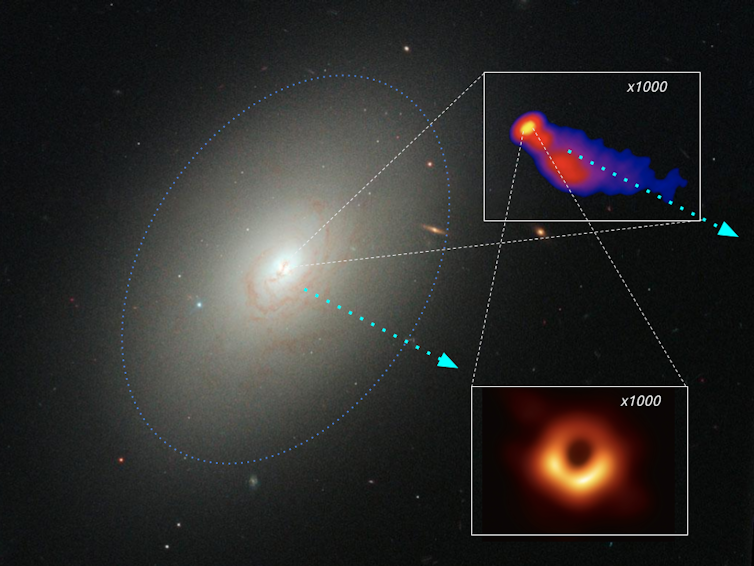If we are to safeguard our very existence, climate change will challenge us to rethink, review, and reinvent the very notion of civilization and modernity.

Activists demanding financing for renewable energy projects in Africa demonstrate on day seven of the UNFCCC COP29 Climate Conference on November 18, 2024 in Baku, Azerbaijan. SURPRISED THEY AIN'T IN JAIL
(Photo: Sean Gallup/Getty Images)
Mbong Akiy Fokwa Tsafack
Nov 20, 2024
As delegates enter the final days of negotiations in Baku, Azerbaijan for the 29th seating of the Conference of the Parties—COP29—one thing is certain: These discussions happen under circumstances far different from the early 1990s. At that time, it was an absolute novelty that climate activists were highlighting the consequences of a Euro-North American notion of modernity and civilization rooted in extraction and overconsumption. Today, delegates meet within the framework of a global recognition that colonialism exacerbated climate change and that decolonisation is critical in reversing its effects on humankind.
In its 2022 report, the Intergovernmental Panel on Climate Change made a clear connection between climate change and colonialism, stating that colonialism not only caused climate change but continues to exacerbate the impact of the climate crisis on the most vulnerable around the world. This acknowledgement sent a strong message to the global community and fired up the debate around the need to decolonize our mindsets, economic systems, and definition of modernity and civilization if we are to adequately deal with the climate crisis.
Climate change has inadvertently exposed the inferiority of modern civilization, characterized by a neocolonial economic model rooted in extraction, exploitation, and destruction of nature
2024 has given humanity a foretaste of the apocalypse that awaits us all if we do not rethink our approach to development and make true commitments toward staying below 1.5°C and attaining net-zero carbon dioxide emissions globally by 2050.
With record-high temperatures in several parts of the world this year, the reality of climate change has dawned on even the hardest denialists. Climate change is a lived experience for billions around the world, as floods continue to ravage cities, droughts threaten villages and communities, and wildfires scorch through lives and livelihoods.
Can We Afford to Continue With Business as Usual?
Science tells us we must immediately halt all new investment in fossil fuels. Many countries are making significant strides in the right direction—the U.K. recently announced that it was closing the last of its coal plants following Portugal, Greece, and many others making the switch away from the most polluting fossil fuel. Despite these gains, threats still loom. Trumpism and its “drill baby drill” narrative might have left climate activists feeling despondent, while news reports expose unsettling conversations between the COP29 chair and fossil fuel corporations. The fact of the matter is that no one can truly deny that the world is facing one of its greatest challenges yet and human-made climate change is at the center of it all.
There’s no room for fossil fuels, even though capitalist greed, individualism, and desire for profits over people and the rest of nature still drive the fossil fuel industry. But this industry is well aware of the devastation it has and continues to cause humanity.
COP28 gave a glimpse of hope with terminology to transition away from fossil fuels. COP29 must be more audacious in calling for a full phase out of fossil fuels if we are to reverse the harms of the last 100 years.
Climate Change as a Gift
Unlike many other human-made disasters facing the world—wars, conflicts, economic crises, and political rivalries—climate change has no borders or boundaries. It affects the wealthy and the less privileged, even if the wealthy can adapt better to its damages. The heatwaves, droughts, and the ferocity of the wildfires which science directly link to human activity have cast a dark cloud on the credibility of the Western civilization that has driven global systems in the last 100 years.
this reality calls on every one of us who is confronted with climate change to challenge the Euro-North American notion of a good life, of well-being, of development, of wealth, that has driven us to a climate apocalypse.
Climate change has inadvertently exposed the inferiority of modern civilization, characterised by a neocolonial economic model rooted in extraction, exploitation, and destruction of nature. A civilization that has destroyed the Earth, polarised society, driven individualism and greed, and left our very existence hanging on a thread if we do not act fast to reverse the speed at which the Earth is heating.
Beyond the horrors and misery bestowed on us by extreme weather events, collapsing food systems, and negative health impacts, there may also be a gift in climate change. If we are to safeguard our very existence, climate change will challenge us to rethink, review, and reinvent the very notion of civilization and modernity.
The Imperative of Decolonial Thinking and Decolonisation
Climate talks today should prioritize the need for a decolonial mindset, focusing on an alternative economic model rooted in our relationship with nature, our relationship with self, with each other, and rethinking growth and development.
Wisdom guarded by Indigenous African communities, and other Indigenous communities around the world, shows that it is possible to live great lives, build great empires and kingdoms, while maintaining peace with nature.
Whether world leaders commit to what must be done at COP29 is yet to be seen. However, the reality of a world ravaged by extreme weather events is indisputable. And this reality calls on every one of us who is confronted with climate change to challenge the Euro-North American notion of a good life, of well-being, of development, of wealth, that has driven us to a climate apocalypse.
Whether we like it or not, we will not save ourselves unless we treat the tragedy of climate change as a gift that compels us to do things differently and ultimately to live better lives.
Our work is licensed under Creative Commons (CC BY-NC-ND 3.0). Feel free to republish and share widely.
Mbong Akiy Fokwa Tsafack is a Pan-African, climate and decolonization activist and executive chairperson of Umoya MwaAfrika.
Full Bio >


